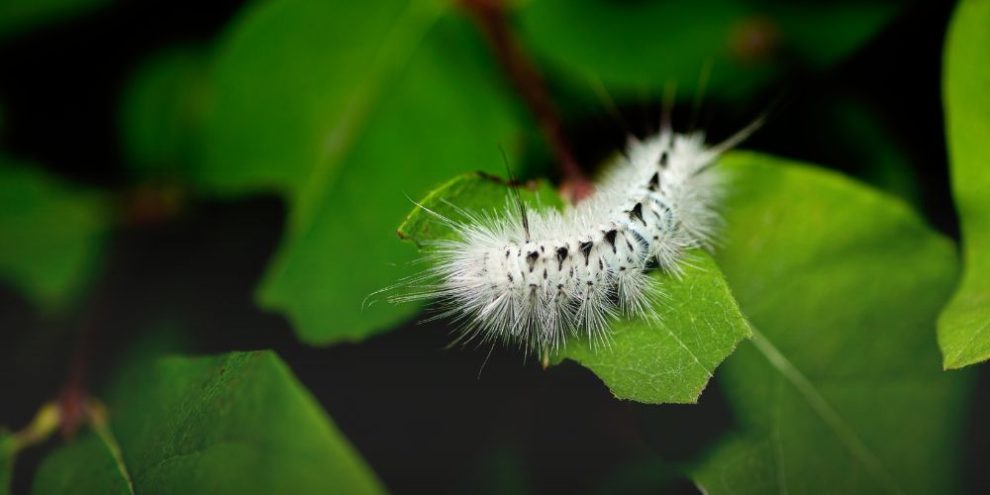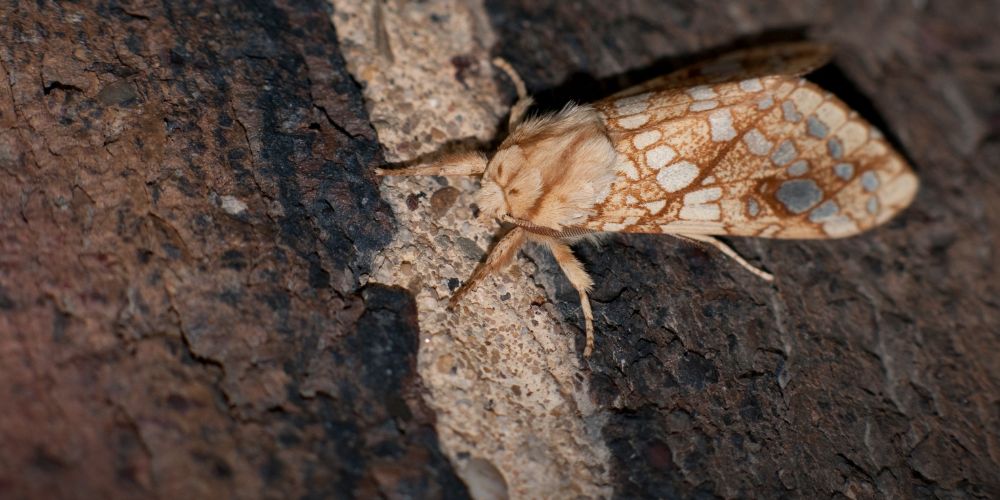
You’ve probably seen them crawling around this time of year … small, fluffy caterpillars with a striking black-and-white coat that looks almost soft enough to pet.
But here’s the catch … the hickory tussock caterpillar is one of those creatures that’s cute from a distance and trouble up close.
Let’s dig into what makes them so fascinating … and a little bit fearsome.
Barrie's News Delivered To Your Inbox
By submitting this form, you are consenting to receive marketing emails from: Central Ontario Broadcasting, 431 Huronia Rd, Barrie, Ontario, CA, https://www.cobroadcasting.com. You can revoke your consent to receive emails at any time by using the SafeUnsubscribe® link, found at the bottom of every email. Emails are serviced by Constant Contact
A common fall visitor in Ontario
The hickory tussock caterpillar (Lophocampa caryae) is native to eastern Canada and parts of the northeastern United States.
In Ontario, they typically start showing up in late summer and early fall and are especially common in forested areas and parks across Simcoe County, Muskoka, and the Kawarthas. They’re also turning up more frequently in suburban neighbourhoods where mature trees provide ideal habitat.
They’re fond of hardwood trees. Think hickory, oak, walnut, and birch. But they’re not particularly picky eaters. So you might find them on apple trees or other garden foliage if food sources are scarce.
They can also sometimes drop from trees on silk threads, which is a surprise encounter for hikers or gardeners.
The science behind the sting
Those fuzzy white hairs may look soft, but they’re actually tiny defensive spines. Each one is capable of breaking off and embedding in your skin. If that wasn’t bad enough … these barbed hairs contain a mild toxin that can trigger an allergic-like reaction.
For most people, contact leads to red, itchy bumps or a rash similar to poison ivy. Some people report a burning sensation or localized swelling. Severe reactions are rare but can happen, especially if you’re allergic or if the hairs get into your eyes or mouth.
It’s a clever survival tactic: the caterpillar’s fuzzy appearance attracts attention, but one touch is enough to teach predators (and curious humans) to keep their distance.
What to do if you touch one
If you accidentally brush against a hickory tussock caterpillar, here’s what experts recommend:
- Remove any visible hairs right away. Use sticky tape or a piece of cloth to gently lift them off the skin. Don’t rub! That can spread irritation.
- Wash the area thoroughly with soap and cool water.
- Apply an antihistamine or hydrocortisone cream to ease itching and inflammation.
- Seek medical advice if symptoms worsen or if you notice swelling near the eyes, mouth, or throat.
For most people, the irritation fades within a day or two.
From fuzzy caterpillar to moth
After feeding for several weeks, hickory tussock caterpillars spin a greyish cocoon and overwinter in that stage. By late spring or early summer, they emerge as light brown moths with darker spots and stripes that blend easily into bark and leaves.

The adult moths don’t sting or cause damage, but their caterpillar stage can sometimes defoliate small trees if there’s a population boom.
Fortunately, outbreaks are usually short-lived and part of a natural cycle.
Teach kids about these caterpillars
If you have children or pets, it’s a good idea to keep an eye out for these caterpillars in your yard or on walks. Teach kids not to touch them. Even dead ones can still cause irritation. Garden gloves are also a smart idea when handling leaves or firewood in late summer.
Dogs and cats are curious by nature and may sniff or paw at these caterpillars. While it’s rare for pets to have serious reactions, contact can cause drooling, paw licking, or mild swelling. If symptoms persist, a vet visit is recommended.
Why hickory tussock caterpillars are good to have around
It’s easy to think of the hickory tussock caterpillar as a pest. After all, it can irritate your skin and defoliate a tree or two. But in nature, very few species exist without a purpose, and this fuzzy creature actually plays several important roles in Ontario’s ecosystems.
1. A food source in disguise
Even with their venom-tipped hairs, hickory tussock caterpillars are an important food source for wildlife. Parasitic flies and wasps often lay their eggs on the caterpillars. When the larvae hatch, they consume the host, naturally keeping populations in check. It might sound gruesome, but it’s one of the ways nature maintains balance.
Certain birds, particularly orioles, cuckoos, and grosbeaks, also rely on these caterpillars for food. They have evolved the ability to eat hairy caterpillars without reacting to their toxins and actually seek them out in late summer when other soft-bodied insects become scarce.
2. Keeping forests in balance
While a heavy population can make trees look rough for a few weeks, hickory tussock caterpillars rarely cause lasting harm. Their feeding usually targets only the outer leaves and helps thin dense canopies, allowing more sunlight to reach younger plants below.
In this way, they contribute to the natural cycling of nutrients and forest renewal.
3. Part of a bigger picture
The caterpillars also support biodiversity indirectly. Their frass (a polite word for insect droppings) adds nutrients back into the soil, benefiting microorganisms and encouraging healthy forest floor growth. Even the cocoons they leave behind provide tiny shelters for spiders and other insects during the winter months.
So while they may seem like tiny troublemakers, hickory tussock caterpillars are actually unsung contributors to the health of our woodlands. And a reminder that even the most irritating species can play a vital role in the web of life.
Look, don’t touch
So while it might be tempting to pick up that adorable “marshmallow worm” you find on a tree trunk this fall, it’s best to admire from afar. The hickory tussock caterpillar is one of nature’s best examples that even the fluffiest creatures can have a hidden defense.
RELATED: What are spongy moth caterpillars and how do you manage them ...





